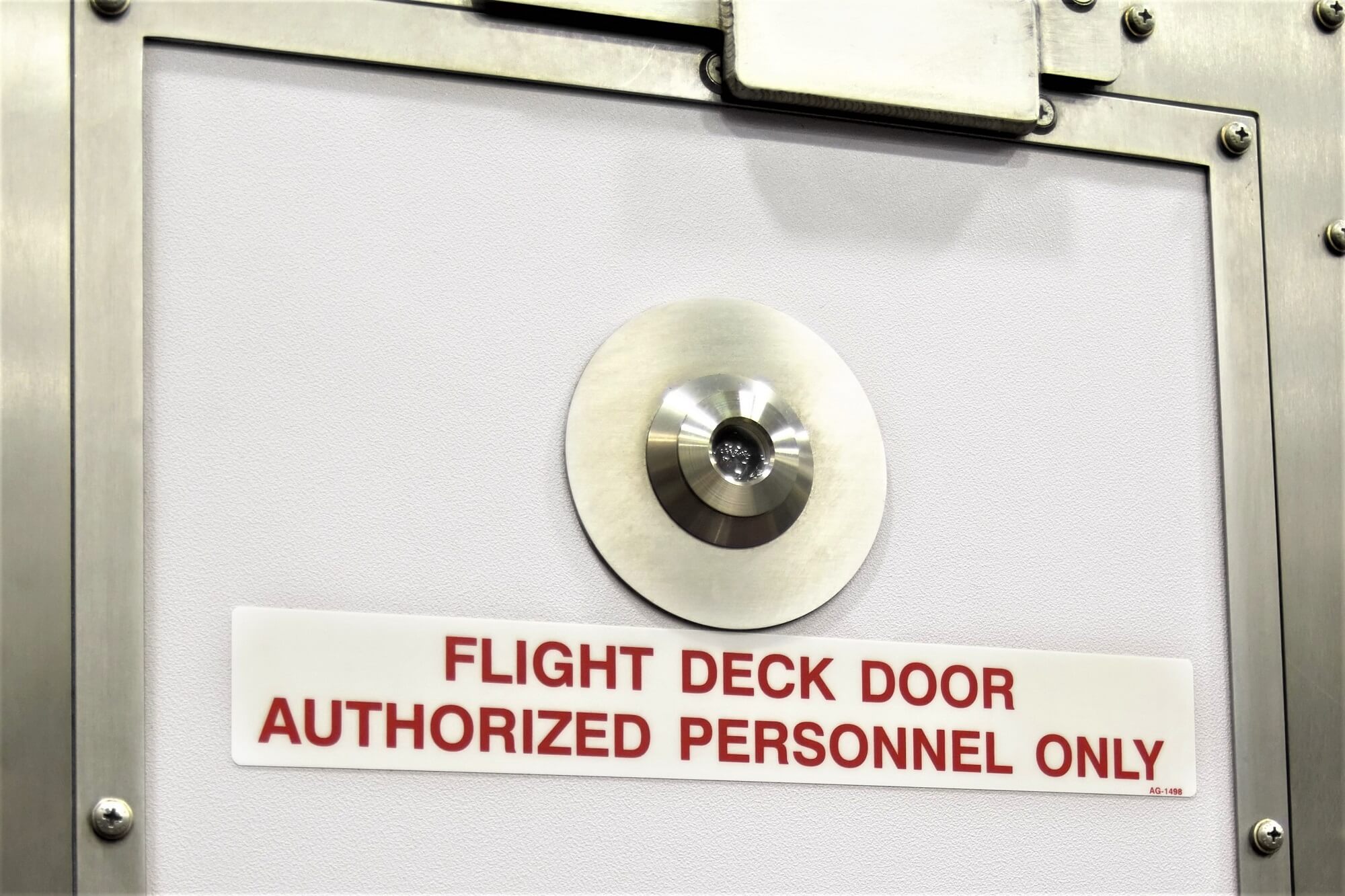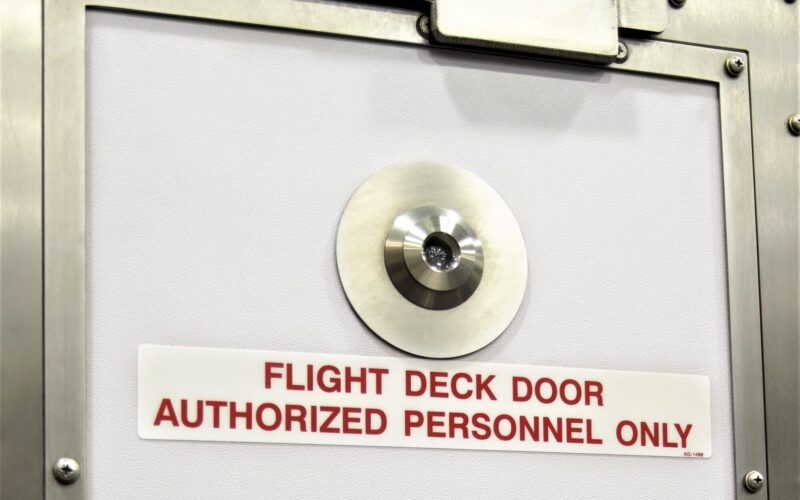While aircraft hijackings are a relatively rare occurrence, their prevention is an everyday focus for both airline and airport staff.
There are several safety and security regulations in place to identify and mitigate threats that can occur at all stages of air travel, beginning the moment a potential criminal enters an aircraft.
Unlike carjacking or sea piracy, where a criminal’s main goal in most cases is robbery or theft, aircraft hijacking could lead to far more dangerous consequences. There are plenty of examples of unauthorized access to the flight deck, leading to the overpowering of pilots and seizure of an aircraft, resulting in tragedy. Most hijacking cases have ended in the deaths of innocent people both onboard the aircraft and on the ground.
So, just how do airlines prevent their aircraft from being hijacked?
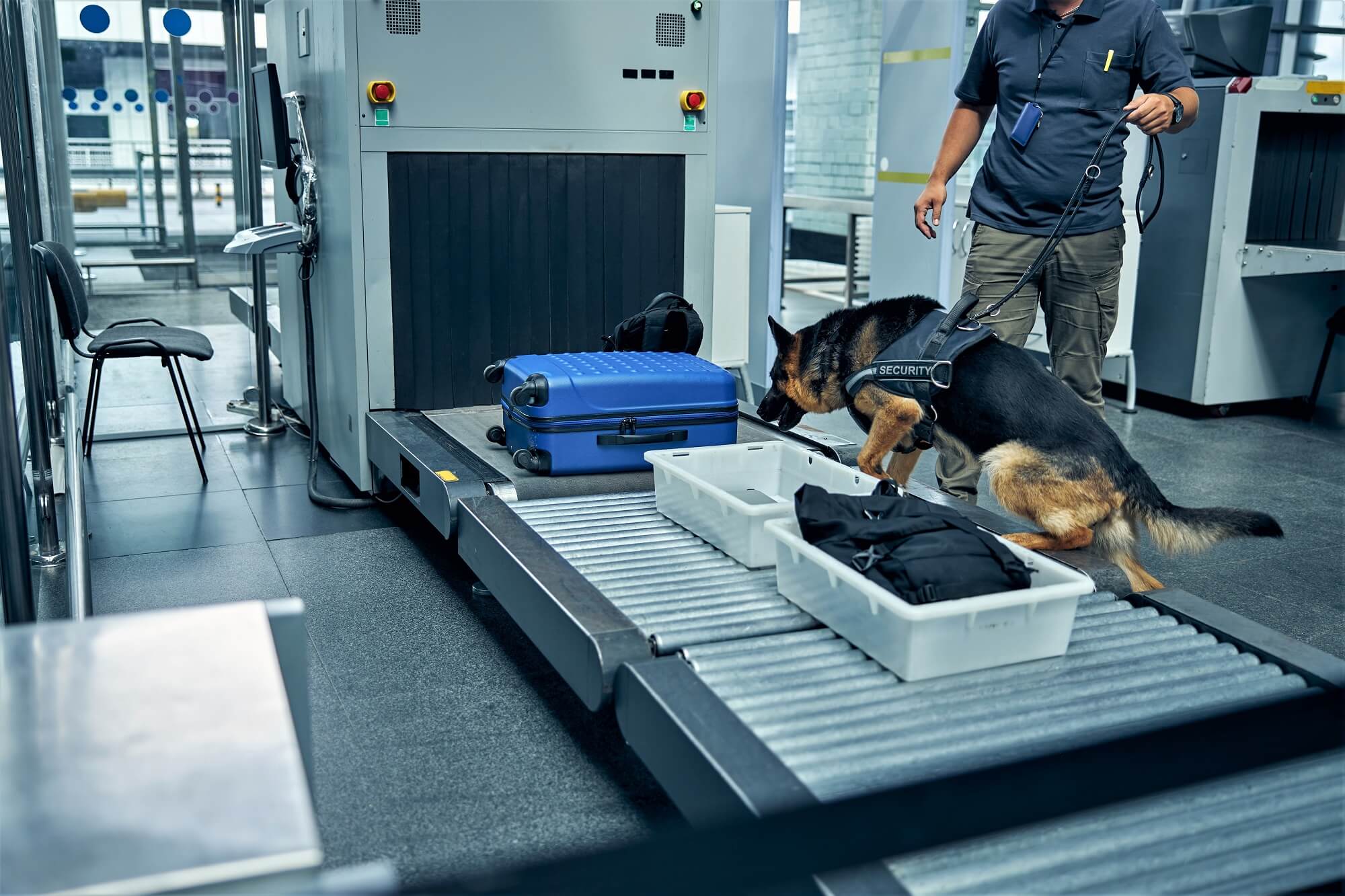
A growing list
The first recorded aircraft hijack occurred in 1931 in Peru, when Byron Rickards flew a Ford Tri-Motor aircraft from Lima to Arequipa where he was approached on the ground by armed revolutionaries. The group wanted the aircraft to distribute propaganda leaflets over the region. However, the pilot refused and was held captive for 10 days. He was later released.
The list of recorded hijackings has grown since this event. And at least three hijacking cases were reported in 2021 alone, according to Statista. The most recent of these incidents occurred in May 2021, when a Ryanair commercial jet was intercepted by Belarusian authorities while flying over Belarus en route to Vilnius, Lithuania.
Following a number of hijacking incidents throughout history, aviation security regulations have had to be altered, expanded and rewritten.
What is classed as a ‘hijacking’?
A hijacking is usually the consequence of events caused by a solo or a group of disruptive passengers.
The International Civil Aviation Organization (ICAO) describes an unruly passenger as an individual who, on the ground or in a plane, carries out any action or pursues “a course of conduct” which is unlawful according to national legislation or “which may amount to a violation under civil aviation security and safety legislations”.
The ICAO devised four threat levels to categorize disruptive passenger events that could lead to ‘skyjacking’ (the act of taking control of a flying aircraft by force).
Depending on the threat level, the ICAO has issued a list of recommendations for airlines regarding how cabin crew and pilots should respond to safety and security breaches onboard. Following these ICAO recommendations, each airline forms its own unruly passenger policy, ensuring employees take reasonable effort to protect airline property, personnel, and passengers.
Dealing with ‘unruly behavior’
The first – and lowest – level includes conduct such as unacceptable behavior towards a flight attendant, communicating displeasure through tone of voice or rude gestures, verbal arguments geared towards cabin crew requests and instructions, and the violation of an airline’s safety regulations.
In cases like this cabin crew members can verbally warn a passenger of the legal consequence of their behavior, which includes civil, administrative, and even criminal charges.
Of course, the main tool at this stage is excellent conflict resolution, a skill which cabin crew member hone through consistent training.
Some potentially threatening situations can be handled easily even before an unruly person as had chance to step on board the plane. A flight attendant is permitted to block disruptive passengers from boarding if some of their actions appear to be dangerous to the crew, other personnel, or an aircraft.
If a passenger starts to act in a threatening manner mid-flight, cabin crew are allowed to prevent the passenger from moving onboard when their actions are suspicious.
Should a passenger begin to use physical force against themselves, other or aircraft equipment, including verbal threats of physical violence or bodily harm, aircraft crew are permitted to issue a warning letter so that the passenger can familiar themselves with the consequences.
There are also occasions where the aircraft captain is required to get involved when dealing with potential threats in the cabin. The commander is responsible for informing air traffic control (ATC) about what is happening onboard in case it is necessary to divert to the closest airport.
However, when a person poses a real threat to life by displaying or using a weapon onboard (for instance, injuring themselves or somebody, or showing any other signs of threatening, intimidating, or disorderly behavior) cabin crew can have the right to consider re-seating the unruly passenger, separating them from other people onboard. In some cases, flight attendants can even apply ‘movement constraint appliances’, such as seat belts, duct tape, shoelaces, and other passenger goods to prevent a person from attacking the flight deck. In these extreme cases, the decision will not be considered a breach of rights.
In the most dangerous situation, when a person attempts to force their way into the flight deck, cabin crew are allowed to use any means to detain the offender. Meanwhile, the captain must perform an immediate emergency landing at the nearest airport, issuing a request to ATC for legal authorities to be present on the ground.
How do airlines deal with hijacking?
Following the September 11 attacks in 2001, when a group of terrorists seized control of four commercials planes mid-flight across the United States, aviation regulators, airlines, and aircraft manufacturers issued a range of procedures to prevent catastrophic events like this from happening in the future.
Since the most protected – and vulnerable – part of an aircraft is its flight deck, all airlines follow strict guidelines on when, how, and by whom the door to the cockpit can be opened. Procedures for operating the flight deck door are similar for commercial airlines across the globe. However, depending on the aircraft model, type, size, and individual airline policy, some aspects may differ.
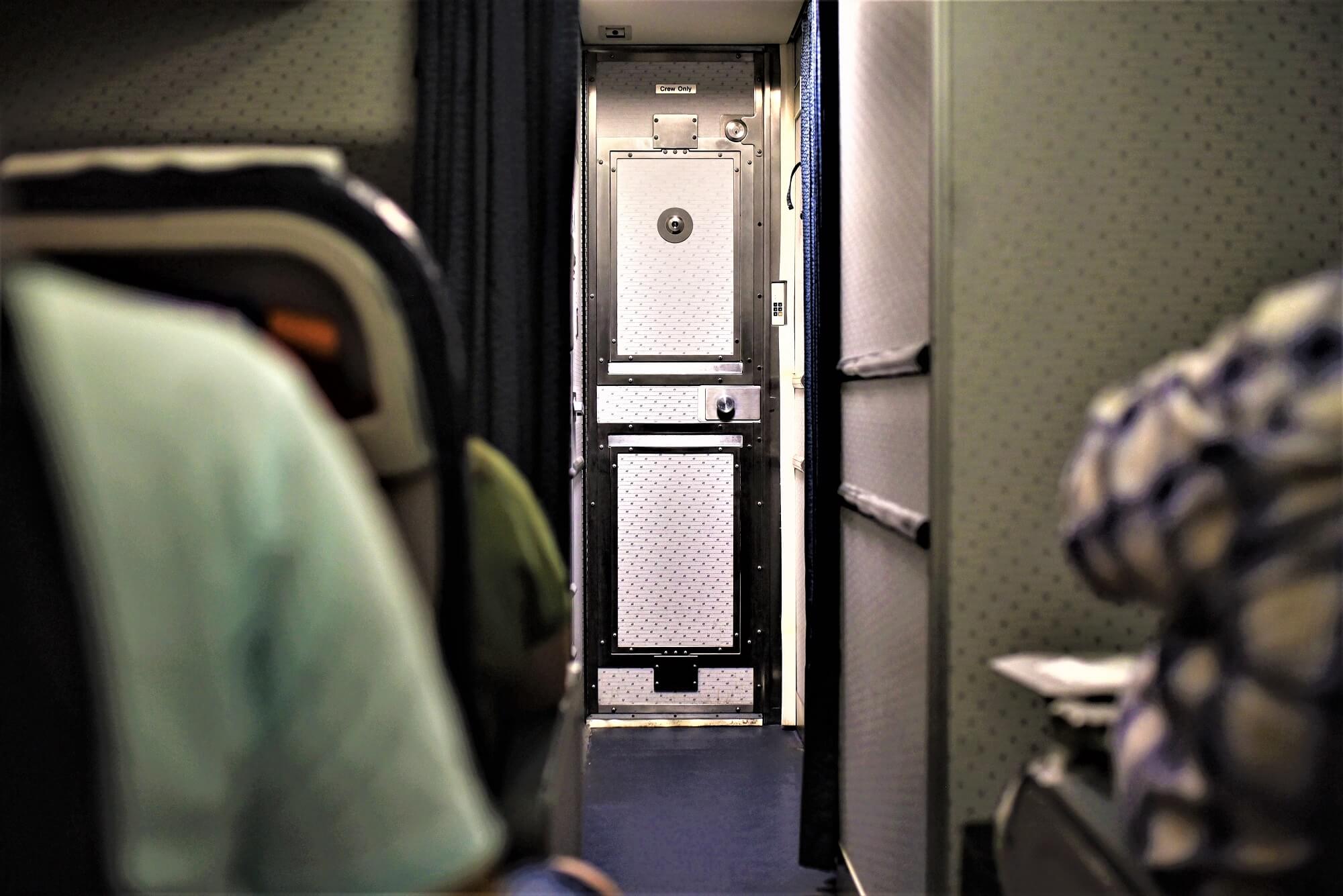
Access to the flight deck door is usually restricted on the ground as well as during the flight. While there are some exceptions for smaller passenger aircraft, the door on more popular aircraft models, such as the Airbus A320, the Boeing 737, and larger jets, must be lockable to prevent entry to those onboard except active crew or other authorized personnel.
Only designated flight crew, cabin crew, or maintenance staff are allowed to enter the aircraft and the flight deck when an aircraft is on the ground. However, prior to entry, all personnel are expected to provide a specific license stating that they are permitted to enter.
The rules are even stricter when the aircraft is airborne. The flight deck door will remain locked during the entire flight.
All air carriers set standard operations procedures (SOPs), following which access to the cockpit is prohibited during certain stages of the flight, for example, during take-off, climb, approach, and landing. The main purpose of the doors is to prevent unauthorized access, so every flight deck door features a specific flight crew cabin surveillance system and electronic or manual locks operated by the pilots.
What’s so important about the flight deck door?
According to in-flight communication rules, it is recommended that cabin crew contact the flight crew mainly via an interphone system. However, when it is necessary to enter the cockpit, for instance, when flight attendants need to serve pilot meals, they are required to follow standard flight deck access procedures.
Typically, the door is equipped with three modes of locking, and controlled by pilots – ‘normal’, ‘unlocked’ and ‘locked’. When the door is set to ‘normal’, it means that the flight deck is locked but it can be accessed from the aircraft cabin side when a cabin crew member enters a specific code in a touchpad. This is the most common mode used by any airline during flight.
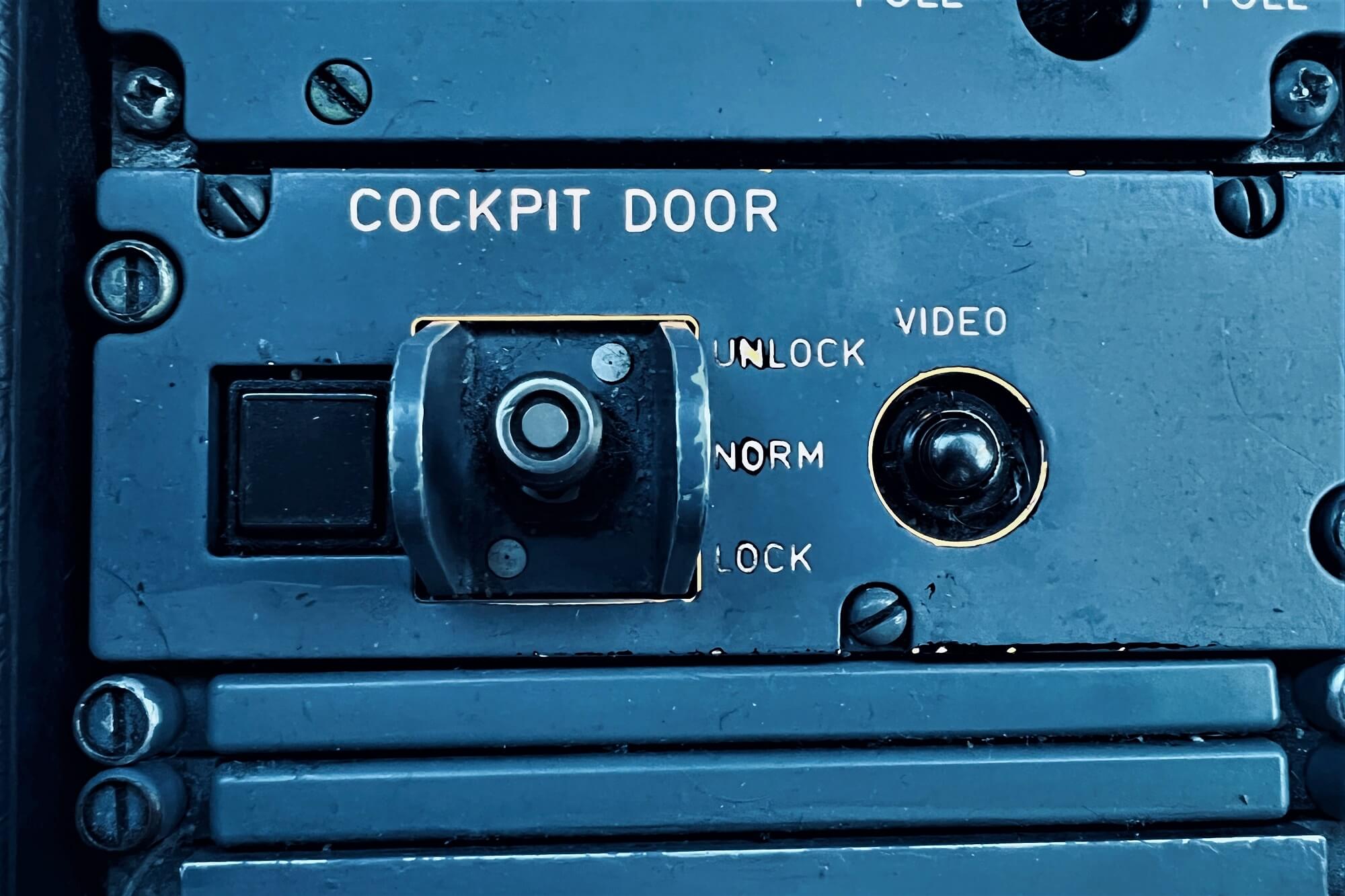
Meanwhile, the ‘unlocked’ mode is rarely used since it leaves the door open, and the flight deck can be accessed from both sides.
However, when it comes to a Level 4 situation onboard, when a threat occurs in the passenger cabin, the door is switched to the ‘locked’ position. In this case, the locking mechanism will ignore the touchpad entry code and remain locked for the duration of the flight unless the pilot intervenes.
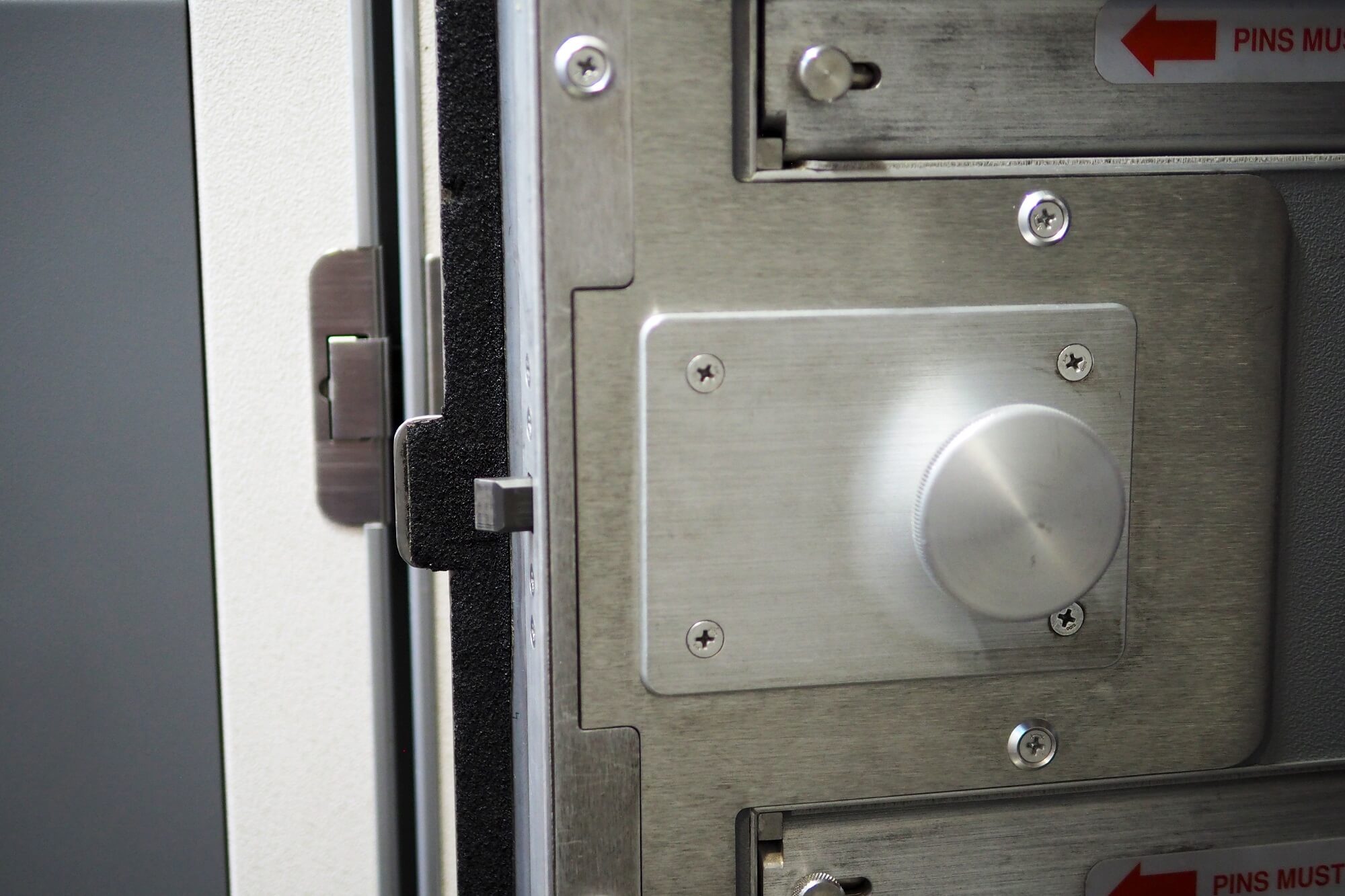
The secret every cabin crew member keeps
The lock mechanism on the flight deck door is the most effective tool to prevent someone from seizing control of the aircraft mid-flight.
While every medium-sized or larger commercial plane is usually equipped with an unbreakable high-grade bulletproof handle-less door made of anti-corrosive aluminum, some planes have an even more complicated double door system installed.
The ‘air lock’ door system, which is most found on large wide-body airliners, features two doors that are electronically interlocked so that both cannot be opened at the same time. This separates the lavatory from the aircraft galley.
Regardless of the type of door utilized, they are all code protected. So, if you have wondered what the biggest secret held by cabin crew members is, it will be that code.
